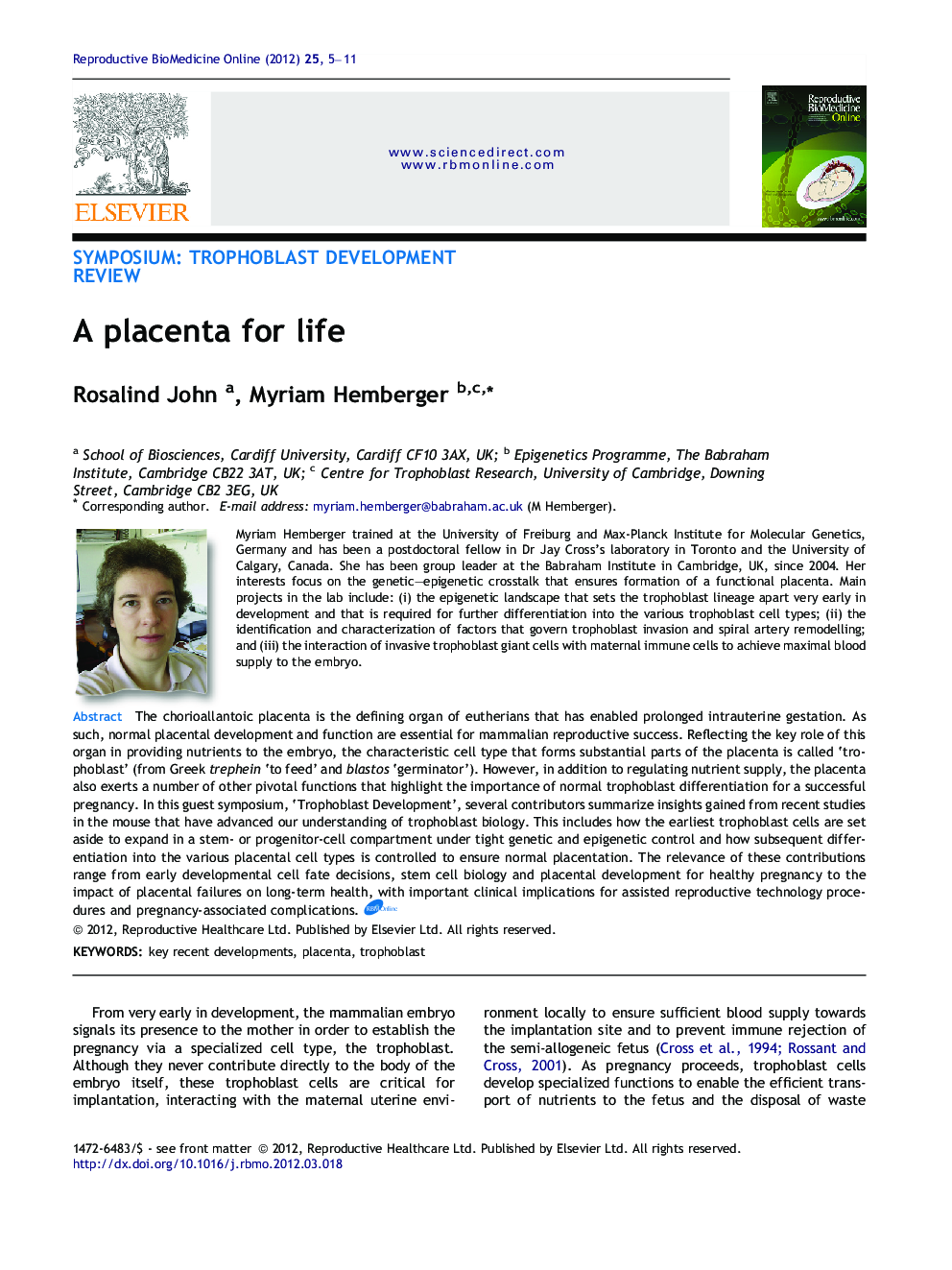| کد مقاله | کد نشریه | سال انتشار | مقاله انگلیسی | نسخه تمام متن |
|---|---|---|---|---|
| 3970480 | 1256727 | 2012 | 7 صفحه PDF | دانلود رایگان |

The chorioallantoic placenta is the defining organ of eutherians that has enabled prolonged intrauterine gestation. As such, normal placental development and function are essential for mammalian reproductive success. Reflecting the key role of this organ in providing nutrients to the embryo, the characteristic cell type that forms substantial parts of the placenta is called ‘trophoblast’ (from Greek trephein ‘to feed’ and blastos ‘germinator’). However, in addition to regulating nutrient supply, the placenta also exerts a number of other pivotal functions that highlight the importance of normal trophoblast differentiation for a successful pregnancy. In this guest symposium, ‘Trophoblast Development’, several contributors summarize insights gained from recent studies in the mouse that have advanced our understanding of trophoblast biology. This includes how the earliest trophoblast cells are set aside to expand in a stem- or progenitor-cell compartment under tight genetic and epigenetic control and how subsequent differentiation into the various placental cell types is controlled to ensure normal placentation. The relevance of these contributions range from early developmental cell fate decisions, stem cell biology and placental development for healthy pregnancy to the impact of placental failures on long-term health, with important clinical implications for assisted reproductive technology procedures and pregnancy-associated complications.Mammals give birth to live young which have been nurtured in utero by the mother via an organ called the placenta. The placenta is derived primarily from a specialized cell lineage provided by the embryo, called the trophoblast. This trophoblast lineage is responsible for communicating with the mother, supplying nutrients to the growing embryo and removing waste products. While the appearance and structure of the placenta varies widely between different mammalian species, these key functions are conserved. The genetically manipulatable mouse has provided a tool to complement studies on human placental material to help us understand both the genetic and epigenetic processes required to generate a functional placenta essential for both short-term wellbeing and long-term health. In this symposium, several contributors highlight novel insights in our understanding of how development of this critical organ is genetically and epigenetically controlled.
Journal: Reproductive BioMedicine Online - Volume 25, Issue 1, July 2012, Pages 5–11